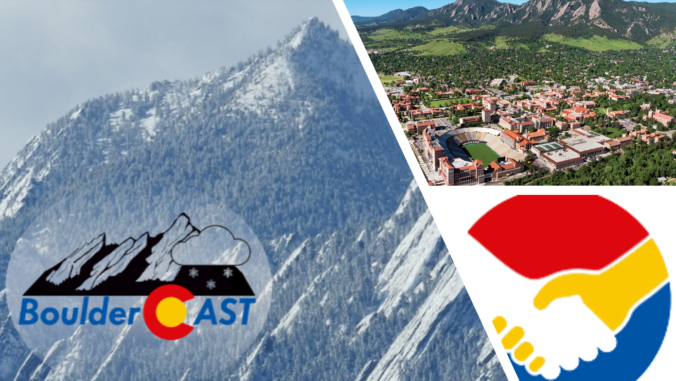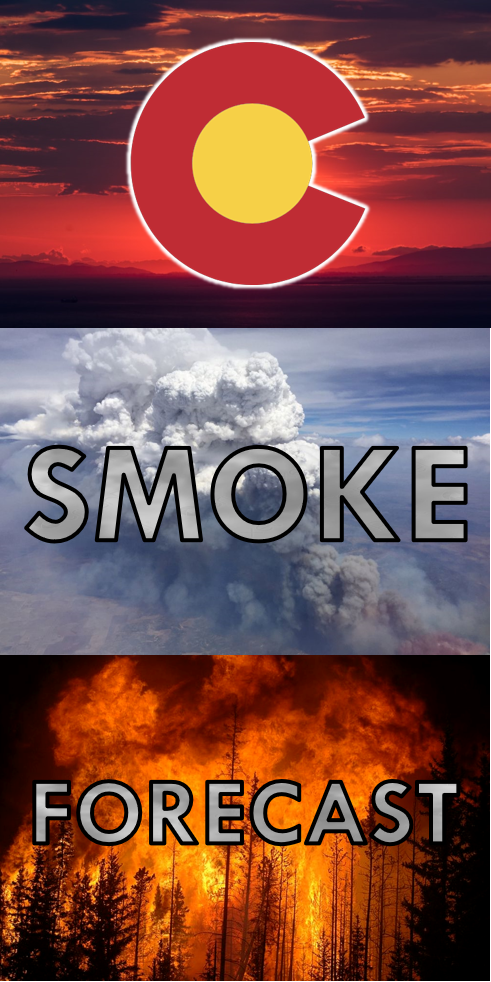It’s with great excitement that we announce our new strategic partnership with CU Boulder. Read on for all the details, including a weather-focused interview with the campus team responsible for keeping CU’s outdoor areas safe and beautiful during all types of weather events.
S
pecifically, we are joining forces with the Facilities Management Outdoor Services department, the group responsible for the maintenance and physical development of the outdoor and landscape aspects of the stunning campus in Boulder. The primary goal of CU Facilities Management is to provide a fully-operational environment to support the university’s world-renowned education and research. This includes maintaining safe outdoor areas during all types of weather events. Whether it be snowstorms, flooding, downslope windstorms or drought, we will now be providing direct forecast consulting to FM Outdoor Services. Our forecasts will be factored into weather-related decisions as FM Outdoor Services determines how best to allocate resources such as snow plows and manpower during significant weather events. If you are one of the 45,000 students or employees at CU Boulder, this should be welcomed news!
This alliance has been in the works for more than a year now and has just recently been finalized.
[Best_Wordpress_Gallery id=”4″ gal_title=”Campus Weather”]This new partnership is going to be mutually beneficial. From lightning detectors, to soil moisture and temperature gauges, to surface weather stations with lasers that measure snow depth, CU Boulder’s instrumentation provides a wealth of metrics beneficial to forecasting. This partnership will allow our team to access key weather and environmental data in Boulder we have previously been without, improving our overall insight into the potential impacts of weather. This data will eventually trickle down to you as well, in one form or another. There are plenty of gears turning on this already. We’ll have more to reveal on this facet of the partnership soon.
We caught up recently with Assistant Director for Operations, Don Inglis, and Outdoor Services Assistant Manager, Ryan Heiland, to talk about how they hope to benefit from the partnership and the importance of accurate weather forecasts to their work in keeping CU’s campus safe and beautiful. Here’s what they had to say…
How and when did you find out about BoulderCAST?
Ryan Heiland: About 3 years ago I was googling to find a site that might provide forecasting more specific to the city of Boulder than the local news or NOAA generally provide. I happened upon a lot of weather blogs and started to monitor them to see how they provided their information and overall rough accuracy. Obviously nothing is certain in weather, especially in Boulder, but BoulderCAST presented the data in an easy to understand format and more importantly gave me information on what MAY also happen with each storm. That allowed me to mentally prepare for differing scenarios in what a storm may or may not do.
Don Inglis: Ryan told me the same story he relates above so I also starting monitoring the site and forecasts about a year after he did.
How do snowfall events of various magnitudes impact your decision-making on campus?
RH: We generally have the equipment and personnel needed to handle smaller storms without being overly concerned with our ability to keep the campus in a safe state. For bigger snow events, more factors start coming into play, such as whether we have room to pile all the snow. Main Campus is compact from a snow removal/storage perspective. We can pile snow in many locations as we plow for smaller storms. But if those areas are full and we get another storm or larger storm, we have to adjust our plans and look at hauling snow. That is a time-consuming process and affects our ability to get campus safe in a timely manner. We need to look at hauling because if our storage spots are full then we end up dealing with ice melting and bleeding across walkways, prolonging the risk to pedestrians of slip and fall injuries. Another issue is timing of the storms. If storms are predicted to hit during the daytime, then we need to learn and understand how fast the storm will hit. Depending on those factors we need to account for safely getting patrons off campus if a storm hits during the day and hits fast.
DI: Ryan has covered most of the concerns but I would add temperature during the event and after the snow event also present challenges relating to the ability of our team to keep up with ice abatement in the days following storms due to the freeze/thaw cycles. Moisture content of the snow can also cause challenges as light fluffy snow is far easier to move than wet, heavy snow.
Do you have a personal interest in weather outside of your day job?
RH: In my career field weather drives everything we do, from irrigation, mowing, fertilization, etc. That has driven me to try and learn as much as I can about how the weather works and understand forecasting at least on a rudimentary scale. After being in this career for more than 20 years now, I find myself becoming more and more interested in weather forecasting. My family and friends tend to call me to see what a storm may or may not really do because they know I have been reading all kinds of information, I’m kind of the family weather nerd.
DI: I have had an interest in weather since I was a kid growing up in Massachusetts. My family was always doing outdoor activities, and knowing what the weather was supposed to be like always made us better prepared to enjoy those activities. The interest in weather carried over into my adult years in my professional life as a golf course superintendent and here at CU as weather impacts almost every decision relating to maintenance practices. I, my wife and two sons have enjoyed outdoor activities as a family and during our years in the Boy Scouts of America (especially winter camping) here in Colorado for the last 20 plus years. We always check the forecast before we head out to ensure we have the appropriate gear. One of my favorite sayings about weather is, “There is no bad weather. There is only bad clothing.”
What is your craziest snowstorm or 2013 flood story from campus?
RH: The flood was intense, but my craziest storm was the back to back blizzards in late 2006 and early 2007. Back to back large snow storms are far worse for us than a singular big one. In the case of those storms, we received an obscene amount of snow with the initial storm and roughly a week or so later another blizzard hit. We piled snow in places we had never piled it before, and have never piled it since. As the storm set in we were unable to keep all sidewalks open, and had to adjust to just a few sidewalks and roadways. Add to that a few days after the first storm we held our winter graduation. It was definitely a very large strain on the grounds department and Facilities Management as a whole.
DI: I wasn’t working at CU for the 2006 blizzard. The 2013 flood was by far the worst weather event I have experienced at CU. Along with a lot of other operations people I stayed on campus for four straight days reacting to the impacts of the flooding both inside and outside of buildings. I saw impacts I’ve never seen from any other storm, and it took our grounds teams weeks to repair some of our turf and landscaped areas. I am still amazed that CU wasn’t closed for longer than we were!
What will you gain MOST out of the partnership?
RH: The access to weather forecasting focused right here in Boulder to help understand large-scale storms better is the biggest benefit for us. Since Boulder sits in a little valley we often experience weather that is quite different than even just a few miles away, causing challenges for us in knowing what to prepare and sometimes catching us off-guard when a storm produces significantly more or less snow than predicted. Depending on the scale of a weather event, being able to interact with the BoulderCAST team directly will give us a great advantage prior to and during large events for planning and operational decisions.
DI: CU Boulder business hours are Monday through Friday, 8 a.m. to 5 p.m. But classes, athletic events, shows and other events are held outside of these hours, as well as on weekends, so we need to balance resources with the forecast and event schedule. Our snow removal team also advises campus administrators when they’re considering a late start or campus closure due to a coming storm. So the detailed localized forecasting will also help us paint a better picture during those discussions as it relates to whether we have the resources to keep campus pathways clear and safe during a given event.
Of course, with most of our team being proud CU alumni, this isn’t our first collaboration with the university. We have been giving guest lectures about Colorado’s crazy weather on campus for years…and the BoulderCAST webcam has generously been offered a home at Skywatch Observatory on East Campus. This new partnership will greatly benefit the CU and BoulderCAST communities alike, providing yet another outlet for our team to educate about the unique weather of the Front Range and Boulder specifically. We’ll have more to share soon, so stay tuned…
Share this news:
.









